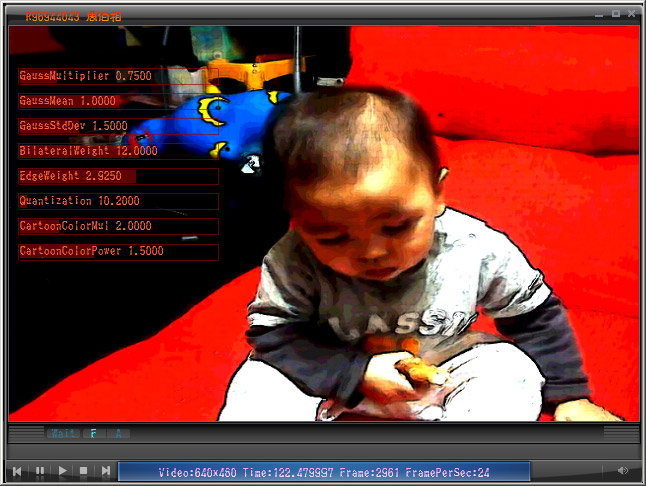R96944043 ©P§B¬Û
http://www.cmlab.csie.ntu.edu.tw/~zho/
Final Project
For the final project, there are three options: research, system and film.
Research: Define a new problem or develop a new approach to solve an existing problem. You can look up recent SIGGRAPH/CVPR/ICCV papers for inspiration. For a new problem, you don't need to solve it completely, but you have to make reasonable progress.
System: Implement an easy-to-use system or library for some existing algorithms. Good candidates are the algorithms presented in recent SIGGRAPH/CVPR/ICCV papers.
Film: Make a short "effects" film. You can use any available tools to make it. At times, you might have to write programs to achieve your goal.
Introduction
I would like to implement a system to enhance image quality by the filters like realtime edge-aware image processing. I present a video player for the realtime bilateral filter on GPU.
Program require: GPU with Shader Model 3.0
Supprt Video format: AVI, Video codec :XVID , Audio codec: PCM, AC3, MP3You can drag a avi file into the windows to play.
Key Control
G: Gaussian Filtering Mode
B: Bilateral Filtering Mode
O: Original Mode
C: Compare Mode
M: Change Current Mode
A: Video Abstraction
1: 1 pass mode
2: 2 pass mode
Left: Increase Approximation Level
Right: Decrease Approximation Level
Related work
Gaussian filter
Gaussian filter as weighted average
I:Input is a step function and noise
f:Spatial Gaussian
J:Output is blurredBilateral filter
The basic idea underlying bilateral filtering is to do in the range of an image what traditional filters do in its domain. Two pixels can be close to one another, that is, occupy nearby spatial location, or they can be similar to one another, that is, have nearby values, possibly in a perceptually meaningful fashion.
Bilateral filter is slow !
Compare to Gaussian filtering, it is much slower because the kernel is not fixed and it may take few seconds on traditional bilateral filtering algorithm on cpu.
Implementation
I use 2 pass of bilateral filtering.
Result of RenderTarget from 1st pass
We can speed up by reducing 1st pass rendertarget size.
Use 1st pass rendertarget as a texture to input the result of g(I(b) - I(x)) and computing 7x7 bilateral filtering on GPU.
Result
AVI,Size 640x480, XVID, AC3
Gaussian Filtering 7x7
Bilateral Filtering 7x7Compare mode
Left side:original video, Right side: Video with Bilateral filterFull HD Size click to enlarge
Video Abstraction

Performance
Download program VFX_R96944043_Final.rar
References